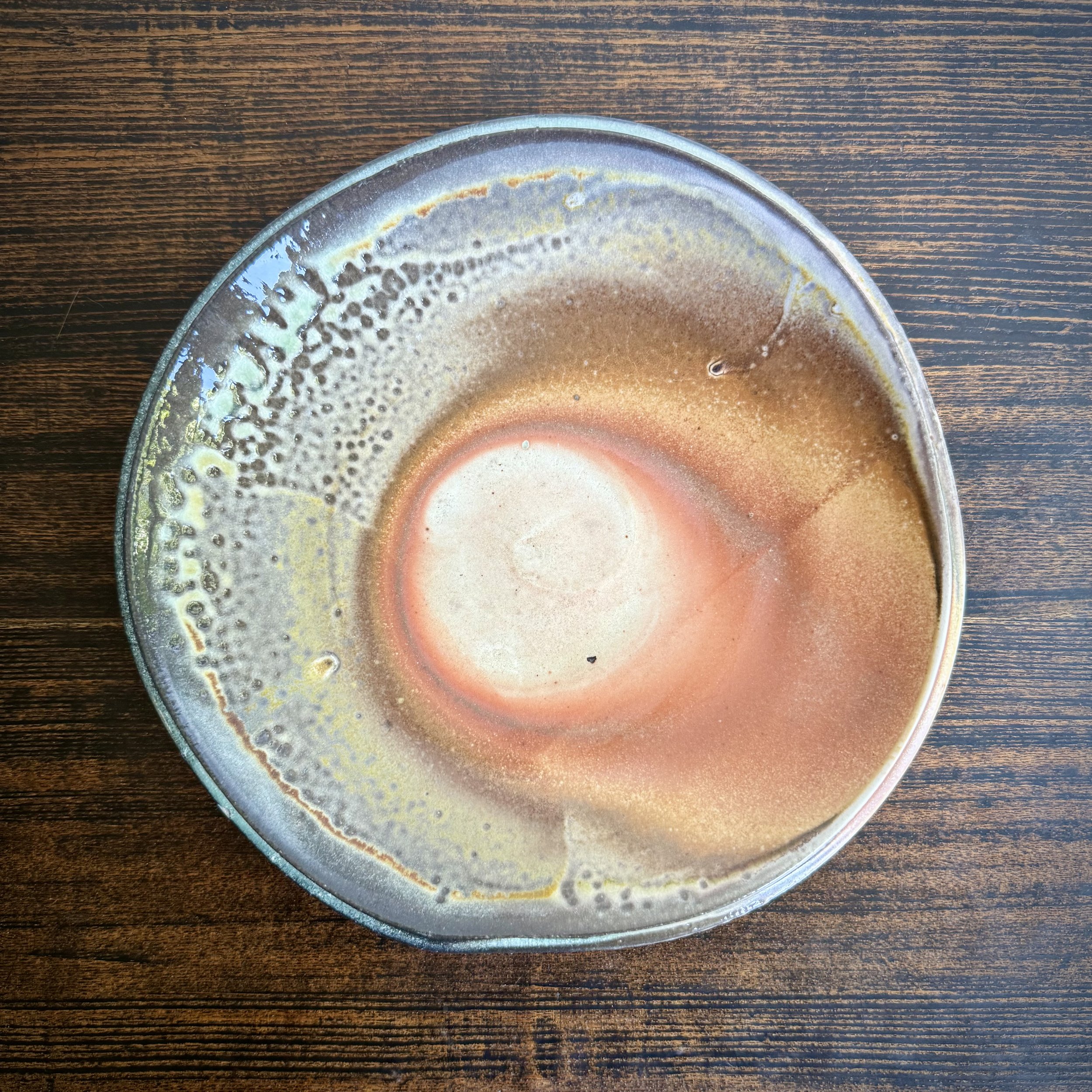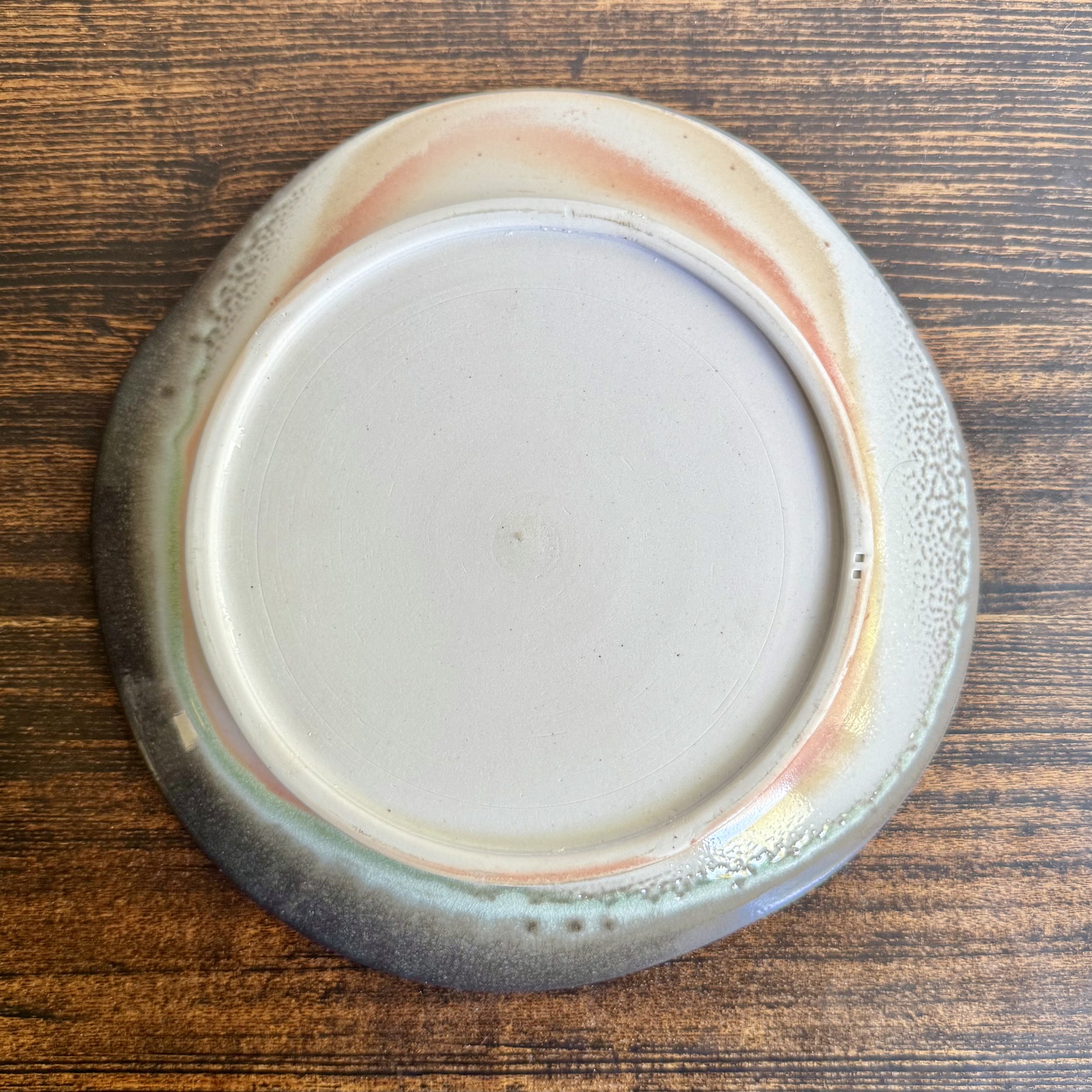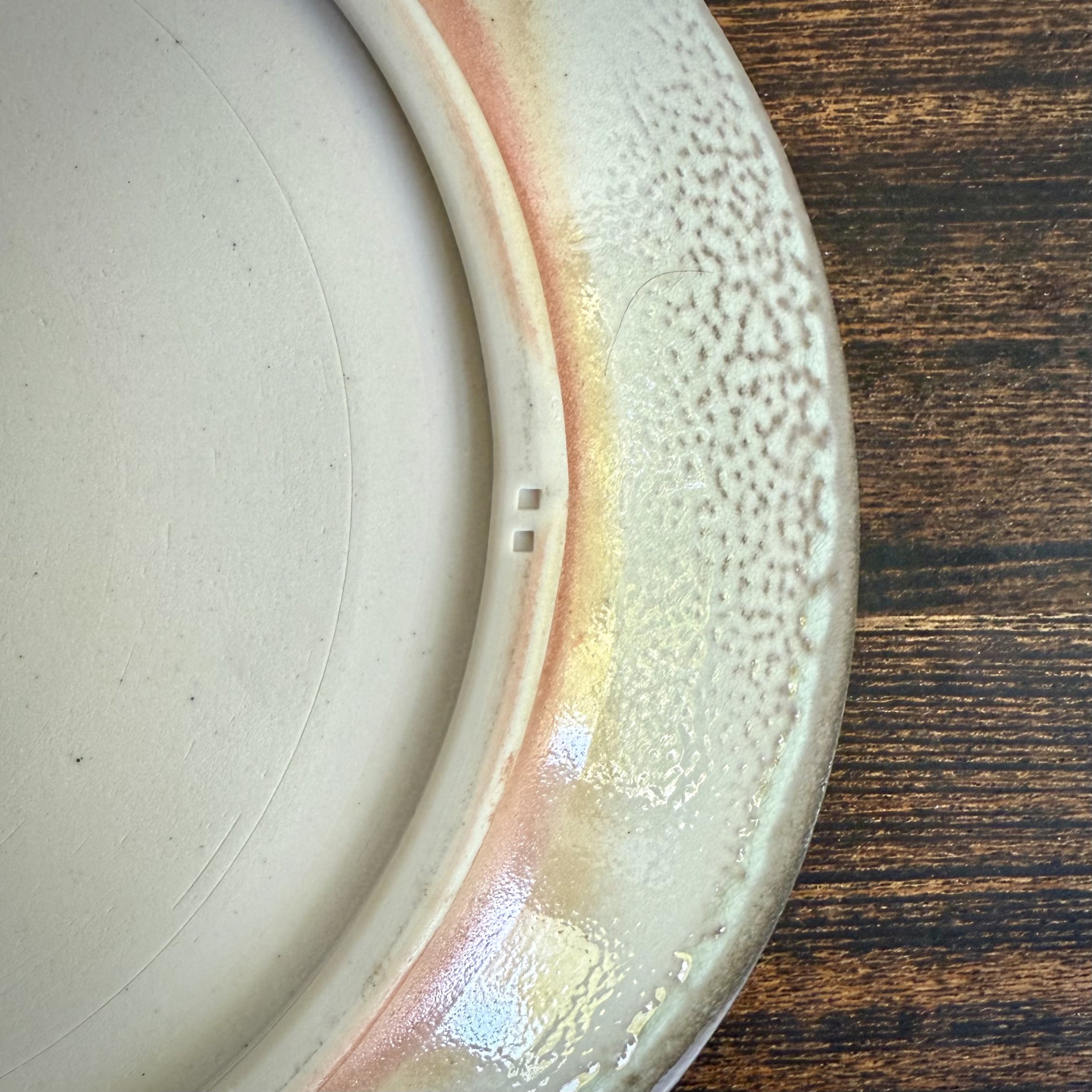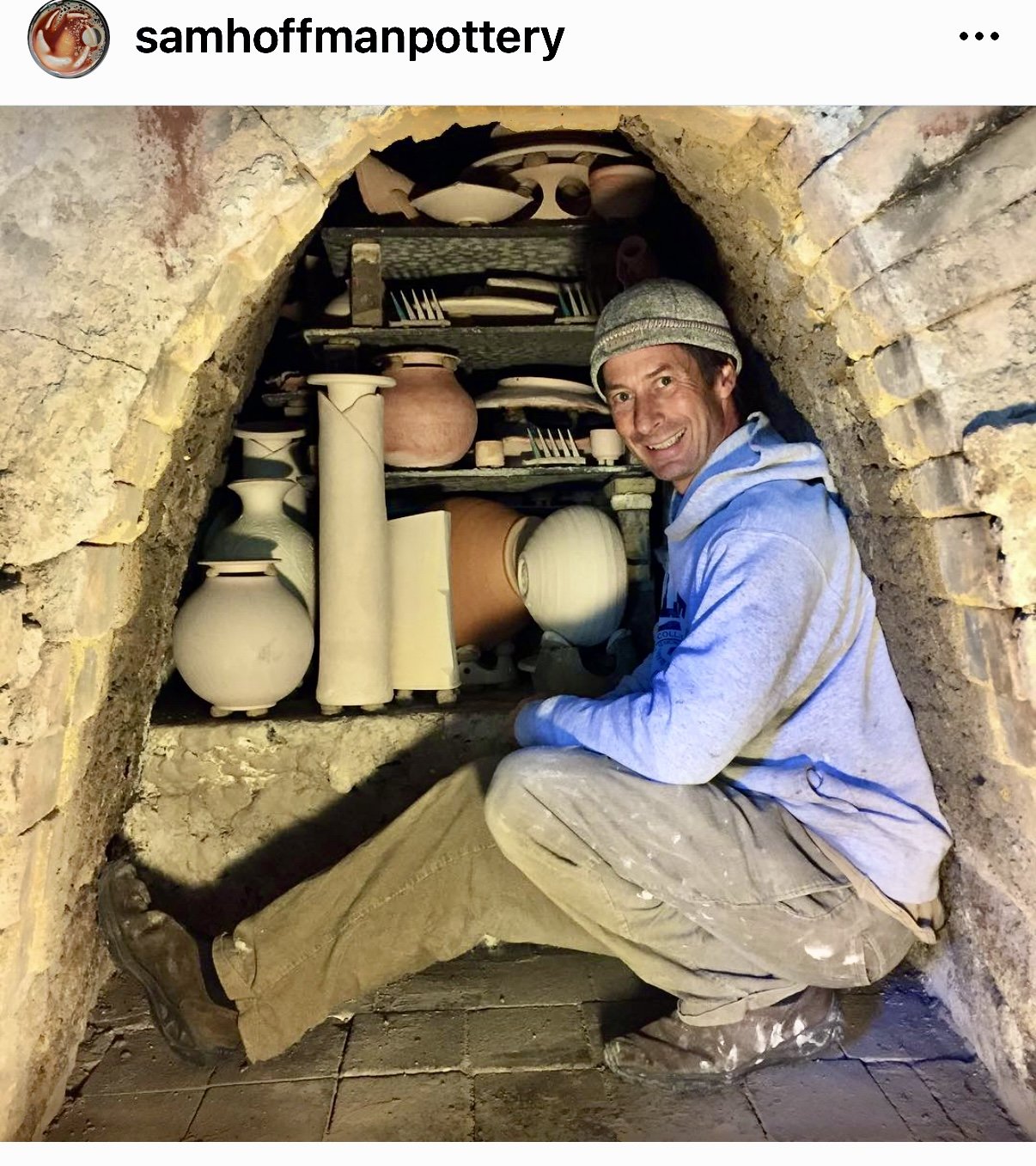 Image 1 of 4
Image 1 of 4

 Image 2 of 4
Image 2 of 4

 Image 3 of 4
Image 3 of 4

 Image 4 of 4
Image 4 of 4





Wood-fired Plate
Gorgeous plate attributed to Oregon potter Sam Hoffman, widely respected for his mastery of wood-fired porcelain. Hoffman fell in love with the technique as a visiting artist at the International Wood Firing Festival in Aomori, Japan. Later, he became a protégé of Hiroshi Ogawa at Ogawa's famous Hikarigama kiln. Currently, Hoffman works and teaches in Corvallis, Oregon, where he has built his own anagama kiln.
Anagama (穴窯) is a Japanese term meaning "cave kiln"). This technique was brought to Japan from China via Korea in the 5th century. Anagama kilns are often built into a hillside, and take the form of a recumbent chimney, with a firebox at the bottom and a flue at the top. Unglazed pottery is carefully packed into the kiln, and a wood fire started. The fire must be stoked continuously, for at least two days , but sometimes as long as two weeks or more! The natural mineral salts and oxides in the wood blow past and interact with the clay, creating a natural ash glaze, and often, extraordinary patterns. The way the kiln is stacked can influence these a little bit, but the outcome is largely due to nature, and fate.
Gorgeous plate attributed to Oregon potter Sam Hoffman, widely respected for his mastery of wood-fired porcelain. Hoffman fell in love with the technique as a visiting artist at the International Wood Firing Festival in Aomori, Japan. Later, he became a protégé of Hiroshi Ogawa at Ogawa's famous Hikarigama kiln. Currently, Hoffman works and teaches in Corvallis, Oregon, where he has built his own anagama kiln.
Anagama (穴窯) is a Japanese term meaning "cave kiln"). This technique was brought to Japan from China via Korea in the 5th century. Anagama kilns are often built into a hillside, and take the form of a recumbent chimney, with a firebox at the bottom and a flue at the top. Unglazed pottery is carefully packed into the kiln, and a wood fire started. The fire must be stoked continuously, for at least two days , but sometimes as long as two weeks or more! The natural mineral salts and oxides in the wood blow past and interact with the clay, creating a natural ash glaze, and often, extraordinary patterns. The way the kiln is stacked can influence these a little bit, but the outcome is largely due to nature, and fate.